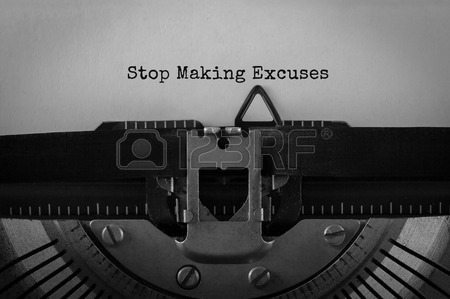Website copywriting for a talented fine artist

The client: Melanie Cormack-Hicks
In 2017, Melanie Cormack-Hicks walked away from the school where she’d taught GCSE art for 20 years and stepped into the role of fine artist – something she’d dreamt about for years but never believed she’d have the confidence to pursue.
Today, she creates evocative paintings of the landscapes she loves – from magical English woodlands to sparkling Scottish rivers and rugged Devon shorelines.
After kicking off her new career with a solo exhibition at Chapel Arts in Cheltenham, she’s now represented by galleries in Devon and Monmouth, and has exhibited and sold paintings in London, Singapore and Hong Kong.
The need
Melanie’s first website was hastily pulled together to give her an online presence but was never properly thought through.
Without a budget for marketing, Melanie had written the site herself – as many sole traders do – and was first to admit that it was too wordy, lacked clarity, and needed improvements to the structure and flow.
With little thought to SEO, the site had failed to attract the new customers Mel hoped would book her workshops and enquire about buying her paintings
Since meeting Melanie at a local networking event over a year ago I had watched her confidence in her art – and, most importantly, the potential it offered as a full-time business – grow. When we first met to talk about her website, she explained that several of her paintings were in the process of being shipped to Singapore, to be exhibited at a prestigious art fair.
Melanie was ready to make her art available to a wider audience by offering high-quality prints for sale online, and to raise awareness of her Cotswold painting workshops.
The solution
Melanie’s career as a fine artist had taken off more rapidly than she could possibly have anticipated, but her website hadn’t kept up.
She had concerns about the process of creating a website that represented her as a professional artist without losing site of her personality. I explained that, rather than using their own voice, a good copywriter provides a better, clearer and more articulate version of the client’s own voice.
I started the copywriting process by providing a website briefing form that I had designed to encourage my clients to think about their customers and their value proposition – the skills and qualities that make them stand out from the competition.
Once I had Melanie’s answers, we met to discuss her aims for her new website and to allay any concerns she had about the process.
The resulting website copy has a clear message about the power of Melanie’s art and what it represents to her customers. It showcases her work for anyone looking for evocative landscapes and seascapes as high-quality prints for their home, and promotes her popular workshops to artists of all abilities.
It reflects the customer journey from initial awareness of Melanie’s art to fulfilling the dream of having one of her paintings displayed in their home – and helps them to achieve that goal.
My work with Melanie is a perfect example of how investing in professional copywriting can help talented individuals take their business to the next level.
In the client’s words…
“Since working with Sarah my brand is much better defined. She’s written my story for magazine articles and took away all the pain of writing my new website.
“Sarah’s caring nature is pivotal to her practice. Her superpower lies within her ability to see you with total clarity. She asks the right questions and listens carefully to understand your business and the needs of your customers, then gives you a clear voice that makes you feel and sound like the best version of yourself.
“It’s always such a relief having Sarah working on my copy. Her ability to understand your customers and what you do for them is superb. She steers your thoughts towards your client’s needs and gives them your voice in return.
“I highly recommend Sarah as a copywriter. She removes all obstacles, making her support second to none. She can do so much more for your business than you realise.”
Melanie Cormack-Hicks
www.melaniecormackhicks.com
Copywriting myths debunked: time to stop making excuses!

You know exactly why you need a copywriter.
You know a copywriter can help get your business noticed for all the right reasons.
That they’ll help you identify the special essence that’s unique to your company – the things that make you stand out from the crowd.
And that they’ll help you articulate the spirit of your business in a way that convinces your target market to choose your business, buy your products, and hire your services.
The reason you haven’t hired a copywriter isn’t because you don’t know you need one.
It’s because you’re making excuses.
You’ve begun to believe those myths you churn out to justify why you keep writing your own copy. Those same myths that stop you taking the plunge and choosing a copywriter who can take away the pain, save you time and help you get a head start on your marketing.
Here are four of the most common barriers to using a copywriter.
Which do you identify with?
Copywriting myths
Myth 1: It’s only words
“Surely, I can write the copy myself – why do I need a copywriter?”
Whether you consider yourself a reasonably capable writer or you have an English degree, there’s a big difference between everyday writing and writing to sell.
A copywriter will get inside the head of your customers. They’ll help you identify the things that make your business different – special, even – and articulate those things in a clear, concise and compelling way.
However confident you are about writing your own marketing materials, writing for the web is a different skill.
A copywriter knows how to write in a way that speaks to your customers and to Google – and their words help your business get noticed online by your target audience.
Myth 2: It’s all in your head
“No one knows my business as well as I do!”
That’s true. But a good copywriter knows the questions to ask about your products and services, the problems they solve for the people who buy them, and the sort of customers you want to attract.
They’ll talk to you about your marketing goals and the reasons why you’re in business. And they’ll work their magic to transform that information into words that work hard to promote your company.
Myth 3: It’ll cost too much
“I can’t afford a professional copywriter – it’s too expensive!”
Like anything that works, good copywriting doesn’t come cheap. But your time is money – and if you’re spending that time trying to write your own website or brochure when your skills lie elsewhere, you’re not saving money – you’re wasting it.
The most effective marketing is a collaboration between hardworking, clever copy and great-looking, functional design.
Designers just love working on projects that are being professionally written – it makes them look good. So remember: if you blow your marketing budget on graphic or web design and have no money left to spend on copy, you’re missing a trick.
Pay a professional to do a proper job, and focus on the superpowers that make you money. Chances are that’s the reason you went into business, after all.
Important note: any time you’re tempted to cut corners and buy on price alone, remember this mantra: you pay peanuts, you get monkeys.
Myth 4: It’ll take too long
“I don’t have time to brief a copywriter – it’ll be quicker to write it myself.”
Earlier this month, I had a meeting with a website designer, who told me that seven of the beautiful websites he’d designed had stalled, simply because the client had decided to write their own copy.
In the time you spend agonising over the best way to promote your business – not to mention the stress and headspace involved in doing it yourself – a professional copywriter could have written your website copy ten times over.
That’s valuable time your shiny new site could be live and doing what a good website should do – getting your brand out there, promoting your business, building trust, and selling your products.
Time that your competitors are out there doing just that… and pinching your customers while they’re at it.
If any of those excuses sound familiar, have a quiet word with yourself and make this the year you leave your copywriting to the professionals.
How clever customer profiles help you attract the right clients

Whatever business you’re in, you can’t successfully market your products or services without knowing who you’re selling to. To quote Friends (the one with Russ, if you must know) “You can try, but you will not be successful”.
One of the first questions I ask business owners when we’re chatting about their marketing is, “Who is your target customer?”. Sometimes they have an idea – female, mid to late 30s, ambitious – but that’s often about as far as it goes.
Far too often (you didn’t hear that from me) they’ll look a bit blank and reply, “Well, anyone, really…”.
You wouldn’t buy shoes without knowing your size, so don’t think about writing copy to sell or promote your business without knowing exactly who you’re trying to convert.
Avatar? I thought that was a film full of giant blue people?
Customer profiles – sometimes called buyer personas, or avatars – are an in-depth description of your ideal client. They look a bit like this:
The expert start-up
Profile
In her mid-30s, Rachel is a divorced graduate with two boys in junior school. She gave up her job so she could achieve a balance between work and family, and believes she can earn more working for herself.
She’s experienced in her industry but has become disillusioned and wants to use her considerable knowledge to help other businesses.
Goals
Rachel has ambitious plans for her own company, and needs a great website and marketing materials to help her launch her business and build her customer base.
She wants to earn enough for financial independence and security for her family, and would like to be able to afford a decent annual holiday for her and her boys.
Challenges
Juggling is her biggest challenge, and she wants to appear professional at all times, while balancing the needs of her family.
Communication styles
She’s happy to talk on the phone and meet face to face when necessary, but deep down prefers to email, as she can respond in her own time, making juggling easier. She is a big social media user and very switched on to the latest trends.
You may have more than one customer profile – perhaps a different persona for different products or services. And that’s okay. The key is to take time to understand the differences between the customers you want to attract, and their motivations to buy.
Talk to the heart
Taking the time to identify and outline your ideal customer and the things that make them tick, makes it easier for you – or your copywriter (hello!) – to talk to them in their language.
As Nelson Mandela once said: “If you talk to a person in a language they understand, that goes to their head. If you talk to them in their language, that goes to their heart.”
When you use your customers’ language you have more influence. By understanding what motivates them, and the things that are important to them, you can begin to address their fears, solve their problems, and excite them with the things they desire.
That insight is like a superpower. Once you know who you’re writing to, you have the power to use that in-depth knowledge to influence them, by producing targeted, segmented marketing messages that really mean something to your audience.
Worried this all sounds a bit manipulative?
Think of it this way. You’re in business because you genuinely believe in your products and services, right? (Time to dust off that CV, if not.)
And if that’s the case, then you genuinely believe in their ability to solve problems, and to make life easier or more enjoyable.
Client with gaping need, meet supplier with perfectly formed solution. You’re welcome.
When it comes to addressing your target audience, there’s no one-size-fits-all solution. Using generic marketing messages is like taking a scattergun approach to your marketing copy. You might reach the odd new customer by chance – perhaps the timing just happened to be right – but you’re more likely to hit the mark if you segment your messages, and use a targeted approach.
That’s when you begin to generate real results.
Social media for small businesses – and why you’re doing it wrong

Let’s get this out the way first, shall we? Social media is as much a pain in the backside as it is a blessing and a way of attracting new clients.
If you’re not disciplined – scrap that… even if you are – it can be a huge, momentous, gargantuan distraction.
It’s also an enormous source of pressure. It sits there in the digital ether mocking you. “Have you updated your LinkedIn profile recently? You really should’ve asked that client for a recommendation by now!” “Wait – you mean you haven’t thought of something acerbic and brilliant to share on Twitter this morning? What’s wrong with you?” “C’mon, you know there’s no point even having a Facebook page these days unless you’re prepared to dig deep and advertise!”
Social. It wants a piece of you. And it wants it NOW.
If you take just one piece of advice away from this post, it should be this: unless you have literally no work – and if that’s the case, I humbly suggest you have bigger problems than how to manage your social media presence – you don’t have time to master all platforms.
You’re not omnipotent. Or is it omnipresent? Or both.
Pick one or two platforms that are best aligned with your client base and do them really, really well. No more.
Sure, you can establish a profile on every platform out there, if you really want to cover all bases – that certainly won’t harm your Google ranking – but as long as your information is up-to-date and relevant, leave it right there, thank you.
Then back slowly away from the time-sapping, energy-draining social media vortex.
Which will you choose?
Those of you with visual businesses – hotels, florists, designers, manufacturers of cute-looking-OMG-I-just-HAVE-to-have-thats – you’ve got it made. In fact, I hate you. Just a tiny little bit.
Your business can flirt with any one of the social platforms and get those customers clicking and buying like a match made in retail heaven. Take your pick. Then take your pics. (Sorry.)
Instagram and Pinterest
Once you know your audience, and you’ve nailed your brand (and I know just the guys if you need help with that) make sure everything you post reflects your brand’s values and a professional image – by that I don’t mean business speak, I mean mistake-free – and you’ll soon be attracting those clients like a match made in retail heaven.
Get busy with that camera and learn to make your business look great. Great social media content doesn’t need expensive gear. Get your smartphone out and get snap, edit, and post happy.
Apps such as Over, Canva and Spark Post help you combine text and images for eye-catching posts, while free apps such as Snapseed and Afterlight are great for editing your pics.
Experimenting will teach you the hashtags and style that works for your audience, and remember, there’s no harm in taking inspiration from competitor businesses that do Instagram and Pinterest well – just no outright copying, please. No one likes a cheat.
Then feel a teeny bit smug – and certainly grateful – that you don’t have to think of clever ways to illustrate being a goddamn freelance copywriter. Because, let’s be honest, Instagram and Pinterest aren’t a lot of use to service businesses. I know. I am one.*
*Okay, so I do them both anyway, but I do them for fun. Any business I get on the back of them is incidental, not planned. Sorry, social media gurus.
I’m going to stick my neck on the line and say whatever business you’re in, you need a profile on LinkedIn. Not a company page. A personal profile.
LinkedIn doesn’t have to be one of the two or three platforms you decide to do really well. You don’t have to sit on there day in, day out, engaging, liking and posting – but show up and be present.
If I meet someone at a networking event, the first thing I do when I get back to the office is connect with them on LinkedIn. If they’re not on there, I assume either they don’t take their business seriously (and if they don’t, why should I?) or that there’s something fundamentally wrong with them. And believe me, I’m only being a tiny bit tongue in cheek when I say that.
Think of LinkedIn as your virtual CV.
I’m in my 19th year of working freelance, and if anyone is out of touch enough to ask me for a CV, I refer them to my LinkedIn profile. Because even if LinkedIn wasn’t one of my three (it is) it would sit there, up-to-date and relevant, showcasing my skills and experience to anyone who wants to work with me.
That’s the bare minimum.
If you want to do LinkedIn well, start by optimising your profile. There are plenty of people out there who’ll happily tell you how to do that. Keep it open in your browser and check it once a day. Keep your profile up to date. Like and comment on relevant posts. Ask your clients for recommendations (I’m up to 102, at the last count). Congratulate people on their new jobs.
But be authentic. Don’t like and comment and share for exposure. That doesn’t feel good.
You might even consider posting your own articles on there, just like this one.
I’ve had such good results from my LinkedIn articles that I’ve started posting all new blogs on there and using my other social media accounts to drive traffic to the post on LinkedIn, rather than to my website.
I know. Controversial.
But it’s not, really. Engagement on my most popular post – remember the secret confessions blog? – looked a little something like this: a tiny little circle representing all 3,200+ of my LinkedIn connections, and a great big circle representing views from second-tier connections. That’s a LOT of engagement, and a lot of quality leads heading my way.
Thanks, LinkedIn. I love you, too.
I love Twitter. There are still predictions of it going down the pan. I hope that doesn’t happen.
But people still get it wrong. They post things like this:
Looking for a copywriter? Let me write your website for you!
*hides eyes*
Has it gone yet? Seriously, that’s the quickest way to turn people right off your business. Social should be just that – a chance to engage with people. Be professional, but don’t be afraid to share your personality. People deal with people, remember? Not bland, faceless companies, bun-fighting for every job that comes along.
So dial down the desperate, and start engaging, informing, and entertaining.
Get your name out there as a trusted source of information on your area of expertise. Share tips, tricks and advice. Reply to questions. And be nice.
I’ve never been convinced about Facebook pages as a tool for service businesses, but perhaps that’s simply because it doesn’t work well for me.
If you’re in the business of selling cupcakes, jewellery, or another photo-friendly product, it can work really well – and there are many pages out there that prove it.
That said, I keep my page up to date, and aim to post daily. Language-relevant funnies and thought-provoking questions get the best engagement for me, but trial and error will show what works for your business.
Whatever business you’re in, you’re more likely to attract new customers and sales through Facebook if you’re prepared to advertise. And that’s a whole other subject.
So, that’s it. I know – I haven’t touched on the virtues of scheduling, the value of video, or the pros and cons of narrative vs ephemeral content (think Snapchat and Instagram stories), but then I’m a copywriter, not a social media guru. Besides, I can always save that for another day.
Which platforms work best for your business? Drop me an email and let me know.
I bet you didn’t know a copywriter could do THIS…

“So, you’re a copywriter – what do you actually do?”
For a while now, my stock response to that question has been “I write websites” – mainly because it’s something everyone can understand.
But I’ve had a few meetings recently in which the client has been visibly surprised when I’ve talked about some of the projects I’ve worked on – which got me thinking about how easy it is to get typecast in business.
It goes a little like this…
I write a website for a start-up business. They love it. They tell their colleague, who’s also setting up a new business. They ask me to write their website. They love it… and so it goes on.
While this isn’t exactly a problem, it does mean businesses are missing out on a bunch of the marketing and messaging services that I – and other copywriters* – can help them with.
Strange…
I remember an ad from a Cheltenham-based printing company that ran daily in the local paper some years back. All it said was, “strange…. some people just use us for printing…”
I found it odd at the time, but now I understand what they were getting at. In the same way that certain graphic designers are best known for designing logos, writing websites is just one aspect of what a good copywriter does.
With that in mind, here are just six of the lesser-known things a skilled copywriter or editor can do for your business:
1. Preaching to the converted
If you have no problem attracting leads but you struggle to convert those leads into business, chances are your emails are to blame.
A copywriter can review the email enquiries you receive and your responses to them, then create a set of email templates that you can adapt to suit each enquiry. They’ll tighten, polish and strengthen your message, add personality and sparkle, and make sure your call to action is clear and compelling.
2. Get connected
Done right, LinkedIn works wonders for business. According to the Content Marketing Institute, 93 per cent of B2B marketers consider it to be the most effective channel for lead generation, and I’ve lost count of the number of new clients who’ve got in touch after finding me on there**.
If your profile is a bit of a mess, a copywriter or editor will help you knock it into shape and inject the personality you need to present yourself in the best possible way.
3. Case in point
Do you show off the work you’ve done for your clients? Case studies or project profiles are a great way to bring to life the ways in which your products or services solve problems for your customers.
Done some great work? Shout about it! A copywriter will interview your clients and write up a set of case studies that you can add to your website and promote on social media to attract the clients you want.
4. Speechless?
I’ve edited many a speech, TV or radio interview over the years, including dozens for the CEOs and directors of Europe’s leading entertainment network. Most of them aren’t native English speakers, so I help them ensure their tone is just right for an international audience.
An experienced editor will make sure your message is crystal clear for your audience, and that it presents you in the best possible light.
5. Style it out
Everything you write on behalf of your business reflects your company’s image. Does your writing support your brand, or damage it?
House style guidelines cover everything from the use of dates, capitals and punctuation to words and phrases that are specific to your company, and your industry. They’re a handy reference guide that can help take the pressure off anyone who’s writing for your business, and many good copywriters – including this one, of course – will be happy to develop guidelines for you.
6. Show off
Been offered space in a local magazine or the trade press? Perhaps you have a PR company that can knock up some tasty copy to make your new product or service shine. If you don’t, a copywriter will relish the challenge.
If you have a relationship with a good copywriter they’ll understand your business and what makes you tick. If not, provide a sound brief so they can produce an article that makes your business stand out from the crowd.
Above and beyond
So there we have it – a quick outline of some of the services that go beyond the standard ‘websites, brochures, leaflets and blog posts’ you’d expect from an experienced copywriter.
If you’d like to find out more about how any of these services can help your business become more successful, call me on 07973 269608 or drop me an email.
*While I can’t speak for anyone else’s experience or skills, I’m pretty certain I’m not the only copywriter who provides these services for their clients. It’s just a question of finding one with the combination of experience, skills and approach that works best for your business.
**According to LinkedIn, I have an all-star profile. It’s not hard to do, but if you need help getting yours up to scratch, get in touch.
